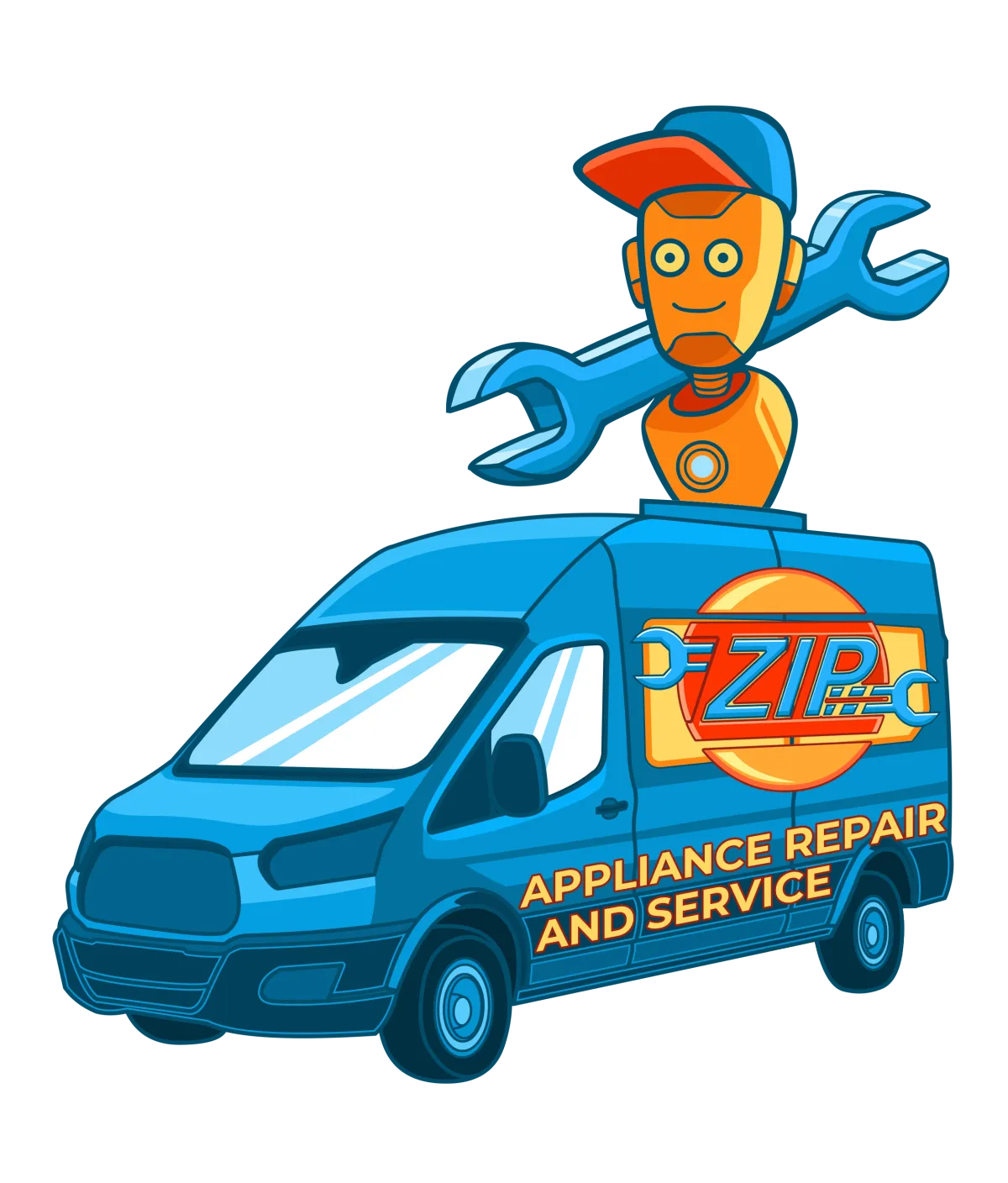Phone: (559) 272-4265
Appliance Repair Tips For Bakersfield, CA Residents

Why Your Microwave Tripping Circuit Breaker?
"Unlock the secrets behind why your microwave is tripping the circuit breaker and discover practical solutions to keep your kitchen running smoothly." - Appliance Boss
Introduction:
Understanding the Issue: Why Your Microwave Tripping Circuit Breaker?
Experiencing your microwave tripping the circuit breaker can be both perplexing and frustrating. This issue not only disrupts your cooking routine but may also signal underlying electrical problems. Understanding why this happens is the first step in resolving it and ensuring your kitchen remains a safe and efficient space.
Common Signs of a Tripping Circuit Breaker
One of the most apparent signs is your microwave suddenly shutting off and the breaker flipping to the "off" position. You might also notice lights dimming or flickering when the microwave is in use, or the breaker may trip intermittently without a clear pattern. Recognizing these signs early can help prevent further complications.

The Basics: How a Circuit Breaker Works
A circuit breaker is a safety device designed to protect an electrical circuit from damage caused by overload or short circuit. It interrupts the flow of electricity when a fault is detected, preventing potential fire hazards and equipment damage. Understanding this mechanism is crucial to diagnosing why your microwave causes it to trip.
Why Circuit Breakers Trip: A Brief Overview
Circuit breakers trip primarily due to three reasons: overload, short circuit, and ground fault. Overload occurs when the electrical demand exceeds the circuit's capacity. A short circuit happens when a hot wire contacts a neutral wire, causing excessive current flow. Ground faults occur when a hot wire touches a grounded component.
Electrical Overload: The Usual Suspect
The most common reason for a tripping breaker is an electrical overload. Microwaves are high-wattage appliances that demand significant power. When used alongside other high-power devices on the same circuit, it can easily overload the system, causing the breaker to trip.
Understanding Microwave Power Consumption
Microwaves typically consume between 600 to 1200 watts of power. This consumption spikes when cooking at high settings, often leading to an overload if the circuit isn't designed to handle such loads. Knowing your microwave's power requirements and your home's electrical capacity is essential.
Faulty Components in Your Microwave
Beyond overloads, faulty components within the microwave can also cause tripping. These issues often stem from internal defects that lead to irregular power demands or short circuits.
The Role of the Magnetron: Heart of the Microwave
The magnetron is the core component responsible for generating the microwaves that cook your food. If the magnetron is damaged or malfunctioning, it can draw excessive power, leading to a tripped circuit breaker. Replacing a faulty magnetron is crucial to restoring normal function.
Capacitor Issues: Hidden Dangers
Capacitors store electrical energy to help the microwave operate efficiently. A faulty capacitor can cause erratic power spikes, overwhelming the circuit and causing the breaker to trip. Identifying and replacing a defective capacitor can resolve this issue.
Diode Problems: Silent Culprits
Diodes convert AC power to DC power within the microwave. A faulty diode can create a short circuit or cause power surges, both of which can trip the circuit breaker. Diagnosing diode issues requires careful inspection and testing.
Damaged Wiring: A Common Problem
Over time, the wiring within your microwave can become frayed or damaged, leading to short circuits or intermittent connections. Damaged wiring is a common cause of breaker trips and requires prompt attention to avoid more serious electrical hazards.
Identifying and Fixing Faulty Wiring
To identify faulty wiring, inspect the microwave's power cord and internal wiring for visible damage. Repair or replace any damaged sections to ensure a stable electrical connection. This process might involve professional help if the damage is extensive.
Power Surges: Unexpected Trouble
Power surges, often caused by lightning strikes or sudden changes in power demand, can overwhelm your microwave and trip the circuit breaker. These surges can occur without warning and cause significant damage if not mitigated.
How Power Surges Affect Your Microwave
A power surge can send an excessive electrical current through your microwave, damaging its components and causing the circuit breaker to trip. Repeated surges can degrade the microwave's lifespan and efficiency.
Preventing Power Surges in Your Home
Install surge protectors or a whole-house surge protection system to shield your appliances from unexpected surges. These devices absorb and redirect excess electricity, protecting your microwave and other electronics.
The Importance of Proper Grounding
Proper grounding ensures excess electricity is safely directed into the ground, preventing electrical shocks and reducing the risk of a tripped breaker. Grounding is a critical aspect of electrical safety in any home.
How to Check for Grounding Issues
To check for grounding issues, use a multimeter to test the outlets and ensure they are properly grounded. If you find any discrepancies, consult a professional to rectify the problem and ensure your home's electrical system is safe.
Inspecting the Outlet: A Simple Check
Inspect the outlet your microwave is plugged into. Look for signs of wear, scorch marks, or loose connections. A faulty outlet can be a simple but overlooked cause of a tripping breaker.
Signs of a Faulty Outlet
A faulty outlet may show visible damage, emit a burning smell, or feel warm to the touch. If you notice these signs, replace the outlet immediately to prevent further electrical issues.
Replacing a Faulty Outlet
Replacing an outlet involves shutting off power to the circuit, removing the old outlet, and installing a new one. Ensure the new outlet is correctly wired and securely fastened before restoring power.
Microwave Placement: Does It Matter?
The placement of your microwave can impact its performance and safety. Ensure it is placed on a stable surface with adequate ventilation and away from other high-power appliances.
Ensuring Proper Ventilation for Your Microwave
Proper ventilation prevents overheating and ensures efficient operation. Avoid placing the microwave in enclosed spaces or near heat sources. Follow the manufacturer's recommendations for clearance around the appliance.
The Importance of Following Manufacturer’s Guidelines
Adhering to the manufacturer's guidelines for installation and use is crucial. These guidelines are designed to ensure safety and optimal performance, reducing the risk of electrical issues.
DIY Troubleshooting: What You Can Do
Before calling a professional, there are several troubleshooting steps you can take. Inspect the microwave, outlet, and circuit breaker for obvious issues, and try resetting the breaker.
Steps to Safely Inspect Your Microwave
Unplug the microwave and check for visible damage or loose connections. Use a multimeter to test the continuity of internal components. If you find any faulty parts, consider replacing them.
When to Call a Professional
If DIY troubleshooting doesn't resolve the issue, or if you encounter complex electrical problems, it's time to call a professional. Electricians have the expertise to diagnose and fix underlying issues safely.
Hiring an Electrician: What to Expect
When hiring an electrician, expect them to inspect your home's electrical system, identify the cause of the tripping breaker, and provide a detailed report and solution. They will ensure all repairs meet safety standards.
Preventive Measures: Keeping Your Microwave Safe
Implementing preventive measures can prolong the life of your microwave and prevent future breaker trips. Regular maintenance and mindful usage are key.
Regular Maintenance Tips for Your Microwave
Clean the microwave regularly, check for wear and tear, and replace any worn-out parts. Avoid overloading the circuit and use a dedicated outlet if possible.
Conclusion: Keeping Your Kitchen Running Smoothly
By understanding the causes of a tripping circuit breaker and taking proactive measures, you can ensure your microwave operates safely and efficiently.
Recap of Key Points
We’ve covered common causes like electrical overloads, faulty components, and power surges. We’ve also discussed the importance of proper grounding and preventive maintenance.
Encouragement to Take Action and Stay Safe
Don’t wait for a small issue to become a major problem. Addressing these concerns promptly will keep your kitchen running smoothly and safely. Take action today to protect your home and appliances.
For professional help, contact Zip Appliance and Plumbing Repair at (661) 387-2282 or visit our website at www.ziprepairservice.com. We're here to help you keep your appliances in top shape!

Why Your Microwave Tripping Circuit Breaker?
"Unlock the secrets behind why your microwave is tripping the circuit breaker and discover practical solutions to keep your kitchen running smoothly." - Appliance Boss
Introduction:
Understanding the Issue: Why Your Microwave Tripping Circuit Breaker?
Experiencing your microwave tripping the circuit breaker can be both perplexing and frustrating. This issue not only disrupts your cooking routine but may also signal underlying electrical problems. Understanding why this happens is the first step in resolving it and ensuring your kitchen remains a safe and efficient space.
Common Signs of a Tripping Circuit Breaker
One of the most apparent signs is your microwave suddenly shutting off and the breaker flipping to the "off" position. You might also notice lights dimming or flickering when the microwave is in use, or the breaker may trip intermittently without a clear pattern. Recognizing these signs early can help prevent further complications.

The Basics: How a Circuit Breaker Works
A circuit breaker is a safety device designed to protect an electrical circuit from damage caused by overload or short circuit. It interrupts the flow of electricity when a fault is detected, preventing potential fire hazards and equipment damage. Understanding this mechanism is crucial to diagnosing why your microwave causes it to trip.
Why Circuit Breakers Trip: A Brief Overview
Circuit breakers trip primarily due to three reasons: overload, short circuit, and ground fault. Overload occurs when the electrical demand exceeds the circuit's capacity. A short circuit happens when a hot wire contacts a neutral wire, causing excessive current flow. Ground faults occur when a hot wire touches a grounded component.
Electrical Overload: The Usual Suspect
The most common reason for a tripping breaker is an electrical overload. Microwaves are high-wattage appliances that demand significant power. When used alongside other high-power devices on the same circuit, it can easily overload the system, causing the breaker to trip.
Understanding Microwave Power Consumption
Microwaves typically consume between 600 to 1200 watts of power. This consumption spikes when cooking at high settings, often leading to an overload if the circuit isn't designed to handle such loads. Knowing your microwave's power requirements and your home's electrical capacity is essential.
Faulty Components in Your Microwave
Beyond overloads, faulty components within the microwave can also cause tripping. These issues often stem from internal defects that lead to irregular power demands or short circuits.
The Role of the Magnetron: Heart of the Microwave
The magnetron is the core component responsible for generating the microwaves that cook your food. If the magnetron is damaged or malfunctioning, it can draw excessive power, leading to a tripped circuit breaker. Replacing a faulty magnetron is crucial to restoring normal function.
Capacitor Issues: Hidden Dangers
Capacitors store electrical energy to help the microwave operate efficiently. A faulty capacitor can cause erratic power spikes, overwhelming the circuit and causing the breaker to trip. Identifying and replacing a defective capacitor can resolve this issue.
Diode Problems: Silent Culprits
Diodes convert AC power to DC power within the microwave. A faulty diode can create a short circuit or cause power surges, both of which can trip the circuit breaker. Diagnosing diode issues requires careful inspection and testing.
Damaged Wiring: A Common Problem
Over time, the wiring within your microwave can become frayed or damaged, leading to short circuits or intermittent connections. Damaged wiring is a common cause of breaker trips and requires prompt attention to avoid more serious electrical hazards.
Identifying and Fixing Faulty Wiring
To identify faulty wiring, inspect the microwave's power cord and internal wiring for visible damage. Repair or replace any damaged sections to ensure a stable electrical connection. This process might involve professional help if the damage is extensive.
Power Surges: Unexpected Trouble
Power surges, often caused by lightning strikes or sudden changes in power demand, can overwhelm your microwave and trip the circuit breaker. These surges can occur without warning and cause significant damage if not mitigated.
How Power Surges Affect Your Microwave
A power surge can send an excessive electrical current through your microwave, damaging its components and causing the circuit breaker to trip. Repeated surges can degrade the microwave's lifespan and efficiency.
Preventing Power Surges in Your Home
Install surge protectors or a whole-house surge protection system to shield your appliances from unexpected surges. These devices absorb and redirect excess electricity, protecting your microwave and other electronics.
The Importance of Proper Grounding
Proper grounding ensures excess electricity is safely directed into the ground, preventing electrical shocks and reducing the risk of a tripped breaker. Grounding is a critical aspect of electrical safety in any home.
How to Check for Grounding Issues
To check for grounding issues, use a multimeter to test the outlets and ensure they are properly grounded. If you find any discrepancies, consult a professional to rectify the problem and ensure your home's electrical system is safe.
Inspecting the Outlet: A Simple Check
Inspect the outlet your microwave is plugged into. Look for signs of wear, scorch marks, or loose connections. A faulty outlet can be a simple but overlooked cause of a tripping breaker.
Signs of a Faulty Outlet
A faulty outlet may show visible damage, emit a burning smell, or feel warm to the touch. If you notice these signs, replace the outlet immediately to prevent further electrical issues.
Replacing a Faulty Outlet
Replacing an outlet involves shutting off power to the circuit, removing the old outlet, and installing a new one. Ensure the new outlet is correctly wired and securely fastened before restoring power.
Microwave Placement: Does It Matter?
The placement of your microwave can impact its performance and safety. Ensure it is placed on a stable surface with adequate ventilation and away from other high-power appliances.
Ensuring Proper Ventilation for Your Microwave
Proper ventilation prevents overheating and ensures efficient operation. Avoid placing the microwave in enclosed spaces or near heat sources. Follow the manufacturer's recommendations for clearance around the appliance.
The Importance of Following Manufacturer’s Guidelines
Adhering to the manufacturer's guidelines for installation and use is crucial. These guidelines are designed to ensure safety and optimal performance, reducing the risk of electrical issues.
DIY Troubleshooting: What You Can Do
Before calling a professional, there are several troubleshooting steps you can take. Inspect the microwave, outlet, and circuit breaker for obvious issues, and try resetting the breaker.
Steps to Safely Inspect Your Microwave
Unplug the microwave and check for visible damage or loose connections. Use a multimeter to test the continuity of internal components. If you find any faulty parts, consider replacing them.
When to Call a Professional
If DIY troubleshooting doesn't resolve the issue, or if you encounter complex electrical problems, it's time to call a professional. Electricians have the expertise to diagnose and fix underlying issues safely.
Hiring an Electrician: What to Expect
When hiring an electrician, expect them to inspect your home's electrical system, identify the cause of the tripping breaker, and provide a detailed report and solution. They will ensure all repairs meet safety standards.
Preventive Measures: Keeping Your Microwave Safe
Implementing preventive measures can prolong the life of your microwave and prevent future breaker trips. Regular maintenance and mindful usage are key.
Regular Maintenance Tips for Your Microwave
Clean the microwave regularly, check for wear and tear, and replace any worn-out parts. Avoid overloading the circuit and use a dedicated outlet if possible.
Conclusion: Keeping Your Kitchen Running Smoothly
By understanding the causes of a tripping circuit breaker and taking proactive measures, you can ensure your microwave operates safely and efficiently.
Recap of Key Points
We’ve covered common causes like electrical overloads, faulty components, and power surges. We’ve also discussed the importance of proper grounding and preventive maintenance.
Encouragement to Take Action and Stay Safe
Don’t wait for a small issue to become a major problem. Addressing these concerns promptly will keep your kitchen running smoothly and safely. Take action today to protect your home and appliances.
For professional help, contact Zip Appliance and Plumbing Repair at (661) 387-2282 or visit our website at www.ziprepairservice.com. We're here to help you keep your appliances in top shape!
If your dryer has been giving you problems, contact Zip Appliance Repair & Service at (661) 387-2282

Appliance Repair In A Zip
If you need a dryer repair call our Team at (661) 387-2282, or visit our online scheduling page to request service.
Appliance Repair
Plumbing Repair Services
HAVE A QUESTION, CALL (661) 387-2282

Online Offers
Take advantage of our online discount offers - save time and money...

Residential & Commercial appliances
See what our company can do for you

Appliance Repair Tips
If your appliance is not working properly...

1405 Commercial Way ste 100
Bakersfield, CA 93309
Lic # 1116346
Equipment We Sevice
- A Call To Confirm Your Appointment Time
- A Email Detailing Your Assigned Technician
- Information Needed Before The Repair Can Be Started
- An Estimate Of Work To Be Done
© 2025 ZIP APPLIANCE REPAIR & SERVICE LLC








